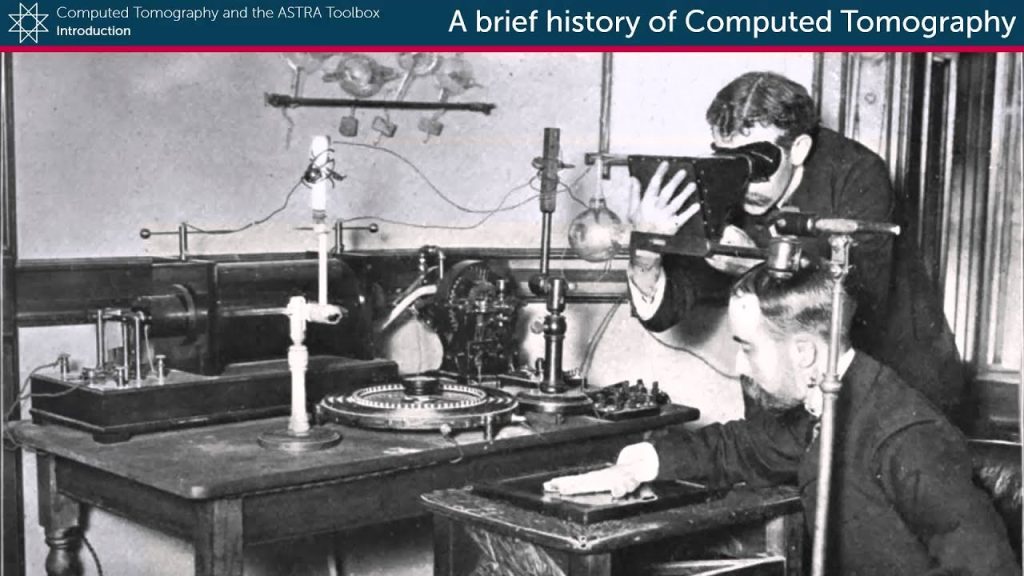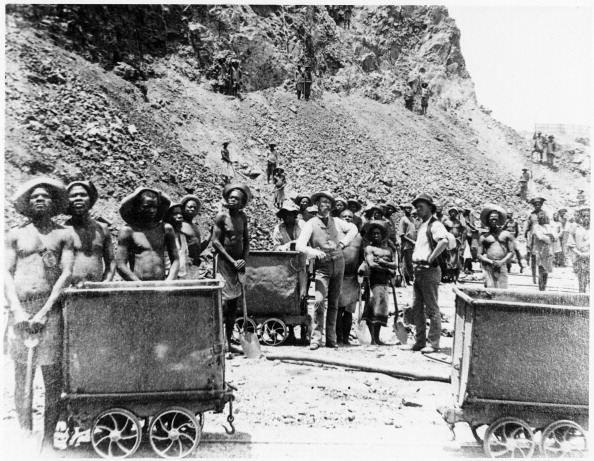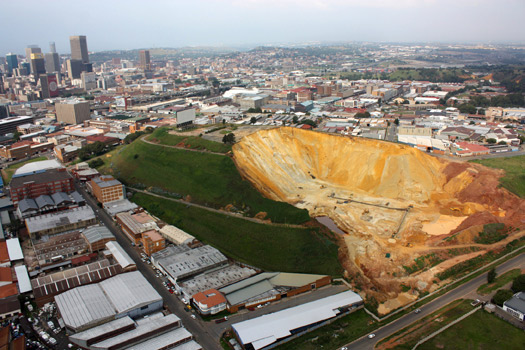Exploring South Africa: Thebe Magugu’s Fashion, the Invention of the CAT Scan, and the Diamond and Gold Mining Industry
Thebetsile “Thebe” Magugu, born on September 1, 1993, is a renowned South African fashion designer hailing from Kimberley and currently based in Johannesburg. His ascent to fame includes winning the prestigious 2019 LVMH Young Fashion Designer Prize and earning a finalist position in the 2021 International Woolmark Prize. Since 2017, Magugu has unveiled eleven individual collections under his eponymous label. Additionally, he has collaborated on various capsule collections with esteemed international brands such as Dior, Adidas, and AZ Factory.
Magugu’s early life began in the township of Ipopeng on the outskirts of Kimberley, and his roots trace back to Sotho ancestry. He received his education at St. Patrick’s Christian Brothers’ College in Kimberley and later attended the London International School of Fashion (LISOF) in Johannesburg. At LISOF, he delved into the realms of fashion design, fashion photography, and fashion media, laying the foundation for his remarkable career in the fashion industry.

| Born | Thebetsile Magugu 1 September 1993 (age 30) Kimberley, Northern Cape, South Africa |
|---|---|
| Nationality | South African |
| Education | London International School of Fashion, Johannesburg |
| Label | Thebe Magugu |
| Awards | LVMH Young Fashion Designer Prize (2019) |
After graduating from LISOF, Magugu established his eponymous label in Johannesburg in 2016. Released in the spring/summer season of 2017, his debut collection titled Geology was featured in Vogue Italia. Magugu’s following collections included Home Economics for the autumn/winter 2018 season, and Gender Studies for the spring/summer 2018 season, both of which were shown at South African Fashion Week and were notably photographed on scarecrows instead of supermodels. This was followed by the Art History collection in spring/summer 2019, and African Studies in autumn/winter 2019.

In 2019, Magugu was announced as the winner of the International Fashion Showcase by the British Fashion Council. He then became the first African to be awarded the 2019 LVMH Young Fashion Designer Prize, which earned him 300,000 euros and a year’s worth of mentoring from LVMH. President of South Africa, Cyril Ramaphosa, subsequently commended Magugu and wrote that “his level of consciousness he brings to his artistry is most inspiring and distinguishes him from his contemporaries”. Magugu presented his debut collection at the Palais de Tokyo during Paris Fashion Week for the autumn/winter season titled Anthro 1. His first-ever menswear line was released in collaboration with Dover Street Market in London in September of that year.

Magugu designed a dress entitled “Girl Seeks Girl”, which was exhibited at the Metropolitan Museum of Art in 2021. This was followed by the Fingerprint Knitted Dress, which American singer Dionne Warwick wore in a short film directed by Solange Knowles titled “Passage”, which served as his entry to the 2021 International Woolmark Prize, where he was shortlisted as a finalist. Inspired by family, his collection Genealogy was released during Paris Fashion Week in September 2021 alongside a short film for the spring/summer 2022 season.
Explore one of South Africa Invention – The invention of the CAT scan
Hounsfield and Dr. Allan Cormack. Their groundbreaking work revolutionized medical imaging and diagnostic procedures.
In the early 1970s, Hounsfield, an English electrical engineer, and Cormack, a South African physicist and biophysicist, independently developed the mathematical principles and technology that would later form the basis for the CAT scan.
Hounsfield, working at EMI (Electric and Musical Industries), a company known for its contributions to the music and entertainment industry, used his expertise in electronics and computer technology to create the first prototype of the CT scanner. He developed the idea of using X-rays to obtain detailed cross-sectional images of the human body.

Simultaneously, Cormack, a professor at Tufts University in the United States, was working on similar mathematical principles related to X-ray imaging. His work involved developing algorithms for reconstructing images from X-ray measurements.
In 1972, Hounsfield and Cormack were jointly awarded the Nobel Prize in Physiology or Medicine for their pioneering work in the development of the CT scan. Their collaboration and innovations laid the foundation for a medical imaging technology that would become an indispensable tool in diagnostic medicine.
The CAT scan, or CT scan, uses X-rays and computer processing to create detailed cross-sectional images of the body. It has since become a standard diagnostic tool, allowing physicians to visualize internal structures, detect abnormalities, and guide various medical procedures.

Collaboration and Development: In 1967, Hounsfield and Cormack independently published their pioneering work on the mathematical principles underlying CT imaging. Their complementary contributions, combined with advancements in computer technology, paved the way for the development of the first CT scanner prototype.
In 1972, Hounsfield and his team at EMI successfully built and tested the world’s first clinical CT scanner, known as the EMI Scanner (EMI-Scanner). This early CT scanner used a computer to reconstruct images from X-ray data obtained through a series of rotational scans around the patient’s body.
Impact and Legacy: The invention of the CT scan revolutionized medical imaging by providing physicians with detailed, cross-sectional images of the body’s internal structures. Unlike traditional X-ray imaging, which produces two-dimensional images, CT scanning allows for the visualization of tissues and organs in multiple planes.
CT scanning has become an indispensable tool in modern medicine, enabling the early detection, diagnosis, and treatment planning for a wide range of medical conditions, including tumors, injuries, and vascular diseases. The technology’s ability to non-invasively capture detailed anatomical information has led to improved patient outcomes and better-informed clinical decisions.
The collaboration between Sir Godfrey Hounsfield and Allan Cormack, with contributions from researchers and engineers worldwide, including those in South Africa, exemplifies the importance of interdisciplinary collaboration and innovation in advancing medical science and technology. Today, CT scanning remains a cornerstone of diagnostic medicine, saving countless lives and shaping the future of healthcare globally.
A Deep Dive into the Diamond and Gold Mining Industry in South Africa
The first diamond that was ever found was found by a 15 year old in the south bank of a river (Orange River) during the 1866’s and 1867’s. Ever since the Kimberley diamond strike of 1868, South Africa has been a world leader in diamond production. The primary South African sources of diamonds, including seven large diamond mines around the country, are controlled by the De Beers Consolidated Mines Company. In 2003, De Beers operations accounted for 94% of the nation’s total diamond output of 11,900,000 carats (2.38 t). This figure includes both gem stones and industrial diamonds. Diamond production rose in 2005 to over 15,800,000 carats (3.16 t). The high value-added diamond cutting industry is in decline in South Africa, mainly due to competition from low-cost labour countries such as India, China and Botswana.
Before the discovery of the first diamond in South Africa by the 15-year-old Erasmus, this gemstone was regarded as an exceptionally rare find. The scarcity of supply had made diamonds very expensive and essentially affordable only to royalty and the wealthy. However, this situation underwent a significant transformation after numerous diamonds were unearthed during the Kimberley Diamond Rush. The sudden influx of diamonds into the world market led to a substantial decrease in prices. Consequently, the coveted gemstone became accessible to the middle class, fueling the enthusiasm of miners eager to claim their share of land in the mining field.

After the discovery of diamonds in South Africa, through alluvial mining, an influx of miners made their way to Kimberley to claim their stake in the diamond industry. In a matter of months mining activities occupied the area, but luckily for the miners, there wasn’t a shortage of supply. In just two years the mining town went from being an arid piece of land to a buzzing location of wealth. Soon, a town was established to accommodate a number of miners that came from around the world.
The South African diamond industry took the entire world by storm, becoming one of the major suppliers of the magnificent gemstone worldwide. Up until today, it is known that Kimberley is one of the most sought-after diamond mining areas in the country. There’s no denying that South Africa remains one of the biggest suppliers of diamonds to the global industry.
Explore the History of Gold Mining in South Africa
The Witwatersrand gold rush of 1886 marked not only the beginning of a century of gold mining in Johannesburg and Ekurhuleni but also significant transformations in the landscapes of these South African cities.
Originally natural grasslands, the Witwatersrand — Afrikaans for “the ridge of white waters” — quickly evolved into regions of bustling boomtowns. The Witwatersrand Basin played a key role, responsible for over 40 percent of total global gold production and remaining a major gold producer.
Over the past century, various factors such as fluctuating international gold prices, changing demands for mining labor, infrastructure construction, and the disposal of mining waste have shaped the development of what is now the most urbanized province in South Africa. The 80-kilometer mining belt between the two cities is dotted with deep-shaft mines, where an extensive network of underground tunnels and significant earth movement to the surface has weakened geological strata, disrupted natural drainage patterns, and altered ecological habitats.
The original semi-arid grasslands ecology has been transformed into an urban forest, and sediment from mining waste has created unexpected wetlands with rich bird habitat. Massive mine dumps, some exceeding 30 meters in height, have become landmarks of Johannesburg — or eGoli, “the place of gold,” in Zulu.
In the 1970s, the gold mines shifted from Johannesburg and Ekurhuleni to the rural areas of the Witwatersrand, leading to informal settlements occupying the vacant mining lands in the heart of the city. The end of apartheid in 1994 brought a large influx of rural residents seeking opportunities in Johannesburg, with a quarter of the population residing in informal settlements, approximately 400,000 people in the mining belt.
These settlements face numerous challenges, as local zoning laws prevent them from receiving municipal services, and residents, lacking secure land rights, construct homes from scrap materials. Changing ownership structures and bankruptcies in the mining industries have complicated responsibility for environmental remediation, making it challenging to improve living conditions and achieve formal municipal status. The technical difficulty of constructing permanent buildings and infrastructure on shallowly undermined land, coupled with health risks from dust, exacerbates the situation.
Rising gold prices and new extraction technologies are enabling the recovery of gold from mine dumps, leading to extensive topographical and hydrological operations. Old mine dumps are disappearing, and waste is transferred to new “super dumps” on the periphery. Newly freed land is redeveloped for light industry and recreation. However, the population of greater Johannesburg is projected to double over the next 20 years, creating a housing shortage and tension over land but also fostering unexpected partnerships between mining companies and informal settlements.

In January 2010, we traveled to Johannesburg and Ekurhuleni to study the rapidly changing mining belt, visiting informal settlements, mine dumps, the FIFA World Cup Stadium, gold processing plants, and a defunct-mine-turned-theme-park called Gold Reef City. Through discussions with various stakeholders, we uncovered a complex web of ecologies that will determine the future of the gold mining belt.
Our investigation documents the relationships between current mining operations, supporting infrastructure, and informal settlements on defunct mining sites. In this slideshow, we aim to illustrate that these relationships offer possibilities for rehabilitating a post-gold industrial landscape into a socially, economically, and environmentally productive urban environment.
However, the mining industry also had profound social and political implications. The exploitation of mineral resources led to the displacement of indigenous communities, the influx of migrant laborers, and the imposition of discriminatory labor practices, including the infamous system of migrant labor and the pass laws.
Moreover, the concentration of wealth and power in the hands of a few mining magnates, predominantly of European descent, exacerbated racial tensions and contributed to the institutionalization of apartheid, South Africa’s system of racial segregation and discrimination.
Overall, the diamond and gold mining industry in South Africa has left an indelible mark on the country’s history, economy, and society. It remains a symbol of both the nation’s mineral wealth and the complex legacies of colonialism and racial oppression.
Add a Comment
You must be logged in to post a comment.
